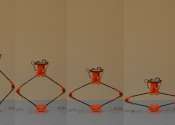New tool to help formulate housing regeneration policies to meet the EU's decarbonization requirements
According to European Union regulations, long-term rehabilitation strategies need to be implemented to achieve the energy transition of building stock.
Jul 9, 2024
0
1









